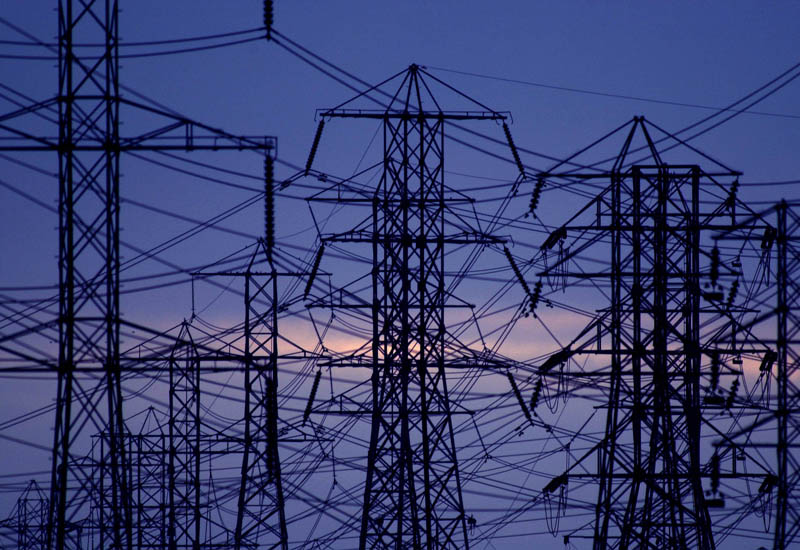- Electricity Generation Averages 3,687mw in Q1’17
The power generation statistics for first quarter 2017, (Q1’17) shows that a total average of 3,687 megawatts, mw, of energy was generated by power stations as Afam VI Power Plant contributed about 12.64 percent of the total, the highest generation among the twenty-three (23) power plants within the period under review.
Daily energy generation attained a peak of 5,846 megawatts, MW, January 24, while daily energy sent out on same date was 5,747 MW. Similarly, the highest daily energy generated per hour attained a peak of 140,316 megawatts per hour, MWh on the January 24, 2017 and daily energy sent out per hour on same date was 137,920 MWh.
This represents the highest level of energy generated and sent out in the month of January 2017 and in Q1 2017. However, the lowest daily energy generation, 1,660 MW, in the month of January 2017 and in Q1 2017 was attained on January 18, 2017 and daily energy sent out on that date was 1,618 MW.
The lowest daily energy generation per hour was also attained on same date. 39,837 MWh was generated and 38,831 MWh was sent out. In February 2017, daily energy generation attained a peak of 4,279 MW on February 21, 2017 and daily energy sent out on same date was 4,217 MW. Similarly, the highest daily energy generated per hour in the month under review attained a peak of 102,705 MWh and daily energy sent out per hour on same date was 101,208 MWh.
Nevertheless, daily energy generation attained its lowest of 2,915 MW in the month of February on February 1, 2017 and daily energy sent out on same date was 2,869 MW. Similarly, the lowest daily energy generation per hour was also attained on same date. 69,962 MWh was generated and 68,847 MWh was sent out.
Lowest Daily Energy Generation
Daily energy generation in March 2017 attained a peak of 4,156.03MW on March 9, 2017 and daily energy sent out on same date was 4,096 MW. Similarly, the highest daily energy generated per hour attained a peak of 99,732 MWh on March 9, 2017 and daily energy sent out per hour on same date was 98,300 MWh.
The lowest daily energy generation attained in March 2017 was 3,496 MW and the lowest daily energy sent out of 3,441 MW was attained on March 16, 2017.
Likewise, the lowest daily energy generation per hour was also attained on same date. 83,790 MWh was generated and 82,580 MWh was sent out.
Meanwhile, The 11 electricity Distribution Companies, DISCOs, operating under aegis of Association of Nigerian Electricity Distributors, ANED, yesterday, criticized Federal Government’s failure to provide the N100 billion subsidy it promised after private investors took over about 18 power sector utilities on November 1, 2013.
The DISCOs also faulted the poor funding for the transmission section of the sector, which they said has resulted in the huge load rejection cases.
A statement issued through umbrella body, ANED, said government which holds 40 per cent equity in the utilities stated many interventions in the Performance Agreement of DISCOs with the Bureau of Public Enterprises, BPE.
ANED’s Director of Advocacy and Research, Barrister Sunday Oduntan, said “To date, the government has not met the privatization transaction foundational requirements of providing N100 billion in subsidies; payment of MDA electricity obligations; ensuring that the DISCos have debt free financial books; and implementing a cost reflective tariff,” it said.
On transmission constraints, ANED doubted if the N50 billion appropriated for Transmission Company of Nigeria, TCN in the 2016 budget was released by half adding that, “This funding level is even more pitiful when, especially, measured against TCN’s estimate of $7.5 billion for its five-year expansion plan that is expected to take us to 10,000 megawatt (mw), from our current 4,500mw.”
The DISCOs said they can only recover their costs when they have more energy delivered by the Transmission Company of Nigeria, TCN, in the area where they have customers. “Should the DISCOs have to suffer financial losses due to the limitations associated with TCN’s wheeling constraints? They queried in the statement.
ANED said TCN which is still a public utility “has remained underfunded over several decades. Such limited or underfunding has resulted in poor transmission infrastructure and planning, with the consequences of grid instability and limited wheeling capacity, adversely impacting the distribution and generation of electricity.”
They decried the continued dearth of TCN funding saying it impedes the DISCOs’ ability to distribute power and has led to crashes in power turbines of Generation Companies, GENCOs, due TCN consistent requests for de-loading.

 Naira4 weeks ago
Naira4 weeks ago
 Naira4 weeks ago
Naira4 weeks ago
 Travel3 weeks ago
Travel3 weeks ago
 Jobs4 weeks ago
Jobs4 weeks ago
 Naira3 weeks ago
Naira3 weeks ago
 Naira3 weeks ago
Naira3 weeks ago
 Investment4 weeks ago
Investment4 weeks ago
 Travel4 weeks ago
Travel4 weeks ago




























